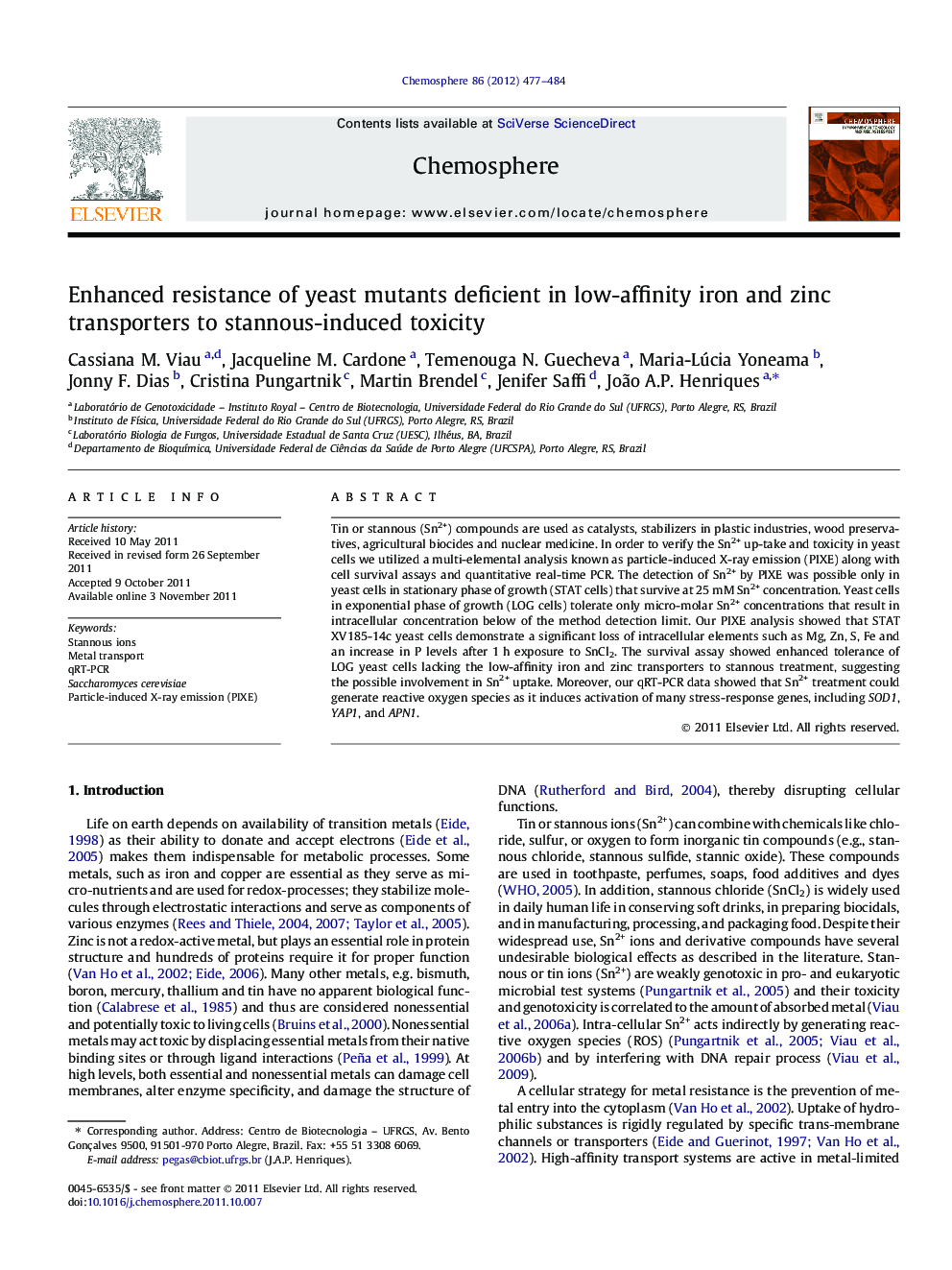| Article ID | Journal | Published Year | Pages | File Type |
|---|---|---|---|---|
| 4410507 | Chemosphere | 2012 | 8 Pages |
Tin or stannous (Sn2+) compounds are used as catalysts, stabilizers in plastic industries, wood preservatives, agricultural biocides and nuclear medicine. In order to verify the Sn2+ up-take and toxicity in yeast cells we utilized a multi-elemental analysis known as particle-induced X-ray emission (PIXE) along with cell survival assays and quantitative real-time PCR. The detection of Sn2+ by PIXE was possible only in yeast cells in stationary phase of growth (STAT cells) that survive at 25 mM Sn2+ concentration. Yeast cells in exponential phase of growth (LOG cells) tolerate only micro-molar Sn2+ concentrations that result in intracellular concentration below of the method detection limit. Our PIXE analysis showed that STAT XV185-14c yeast cells demonstrate a significant loss of intracellular elements such as Mg, Zn, S, Fe and an increase in P levels after 1 h exposure to SnCl2. The survival assay showed enhanced tolerance of LOG yeast cells lacking the low-affinity iron and zinc transporters to stannous treatment, suggesting the possible involvement in Sn2+ uptake. Moreover, our qRT-PCR data showed that Sn2+ treatment could generate reactive oxygen species as it induces activation of many stress-response genes, including SOD1, YAP1, and APN1.
► The mechanism of Sn2+ toxicity in yeast Saccharomyces cerevisiae was evaluated. ► PIXE analysis showed lower concentration of Mg, Zn, S and Fe after Sn2+ treatment. ► Cells lacking low-affinity iron or zinc transporters are more resistant to Sn2+ ions. ► Expression of genes involved in stress response, Cu and Ca metabolism was modulated. ► Low-affinity iron and zinc transport systems may be involved in Sn2+ uptake.
